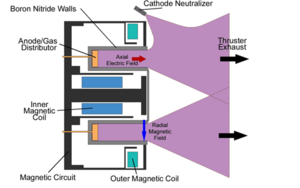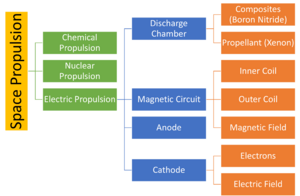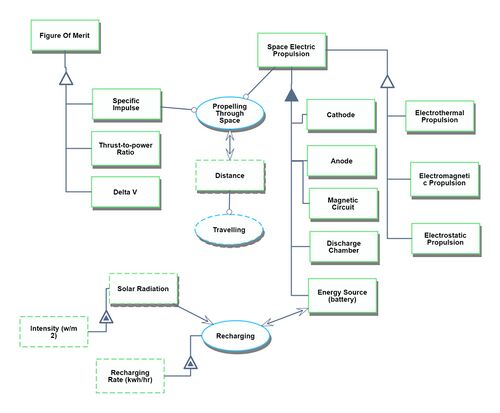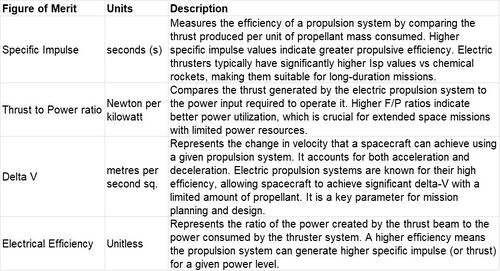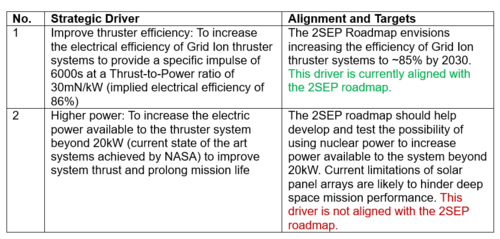Difference between revisions of "Space electric propulsion"
| Line 22: | Line 22: | ||
Relevant figures of merit can be seen in the table below. | Relevant figures of merit can be seen in the table below. | ||
[[File:FOM_SEP.jpg|||centre||500x500px|Figures of Merit for electric propulsion system]] | [[File:FOM_SEP.jpg|||centre||500x500px|Figures of Merit for electric propulsion system]] | ||
<br clear=all> | |||
==Strategic Drivers== | |||
The key strategic drivers are electrical efficiency of the thruster system, and input power available to the thruster. These directly relate to increasing the product of specific impulse and thrust-to-power, which we know to be directly proportional to thruster efficiency. This is to say that increasing thrust efficiency pushes out the pareto frontier and will enable a more diverse range of space missions with longer lives. Additionally, increasing power available to the system will result in higher output thrust available. | |||
[[File:strategic_drivers_SEP.png|||centre||500x500px|Figures of Merit for electric propulsion system]] | |||
Revision as of 16:48, 2 November 2023
Electric Propulsion in Space
Roadmap Overview
Spacecraft electric propulsion uses electrostatic or electromagnetic fields to accelerate mass to high speed and thus generate thrust to modify the velocity of a spacecraft in orbit. This method leverages the charge/mass ratio of propellants, with relatively small potential differences potentially generating high exhaust velocities. This reduces the amount of reaction mass or propellant required, but increases the amount of specific power required compared to chemical rockets.
Electric thrusters typically use much less propellant than chemical rockets because they operate at a higher specific impulse than chemical rockets. Due to limited electric power the thrust is much weaker compared to chemical rockets, but electric propulsion can provide thrust for a longer time.
Design Structure Matrix (DSM) Allocation
Below we can see the DSM Allocation for the electric propulsion system. Sub components have been classified by tier and colour for ease of understanding (for instance, electrons and electric field are related to anode and cathode and thus highlighted in green). Cells shaded in yellow indicate that the corresponding components interact with each other during the operation of the propulsion system.
Roadmap Model using OPM
Figures of Merit
Relevant figures of merit can be seen in the table below.
Strategic Drivers
The key strategic drivers are electrical efficiency of the thruster system, and input power available to the thruster. These directly relate to increasing the product of specific impulse and thrust-to-power, which we know to be directly proportional to thruster efficiency. This is to say that increasing thrust efficiency pushes out the pareto frontier and will enable a more diverse range of space missions with longer lives. Additionally, increasing power available to the system will result in higher output thrust available.
